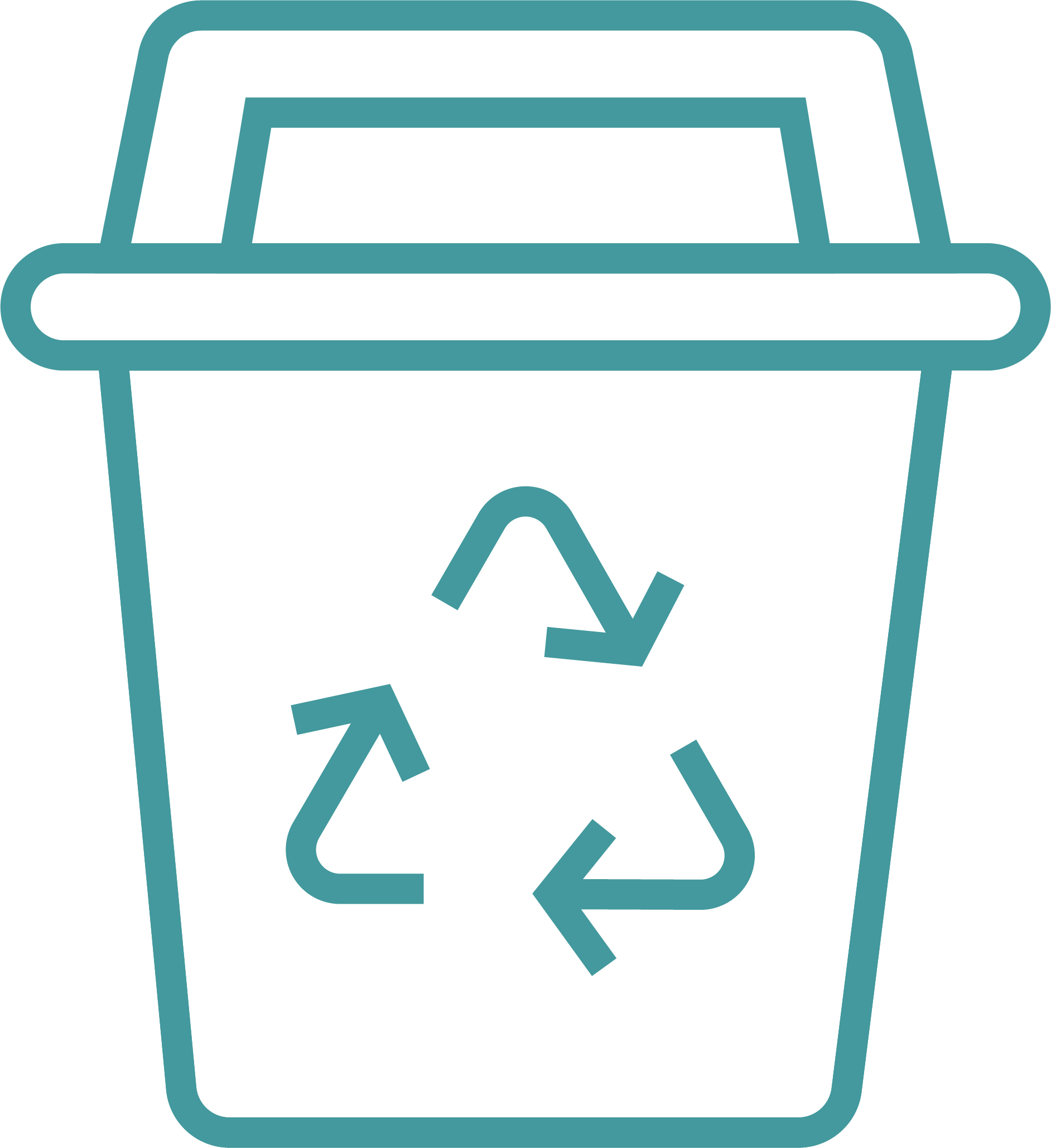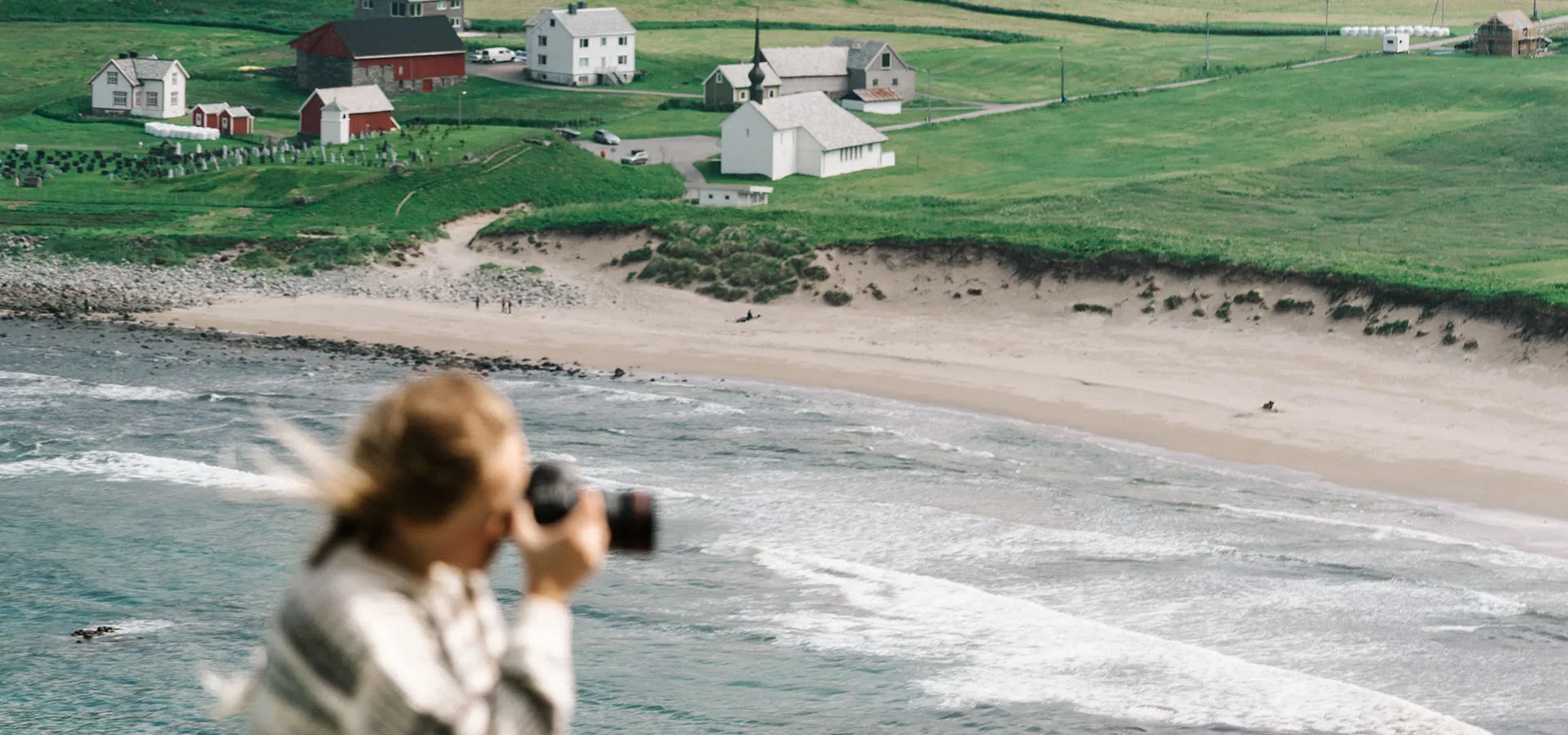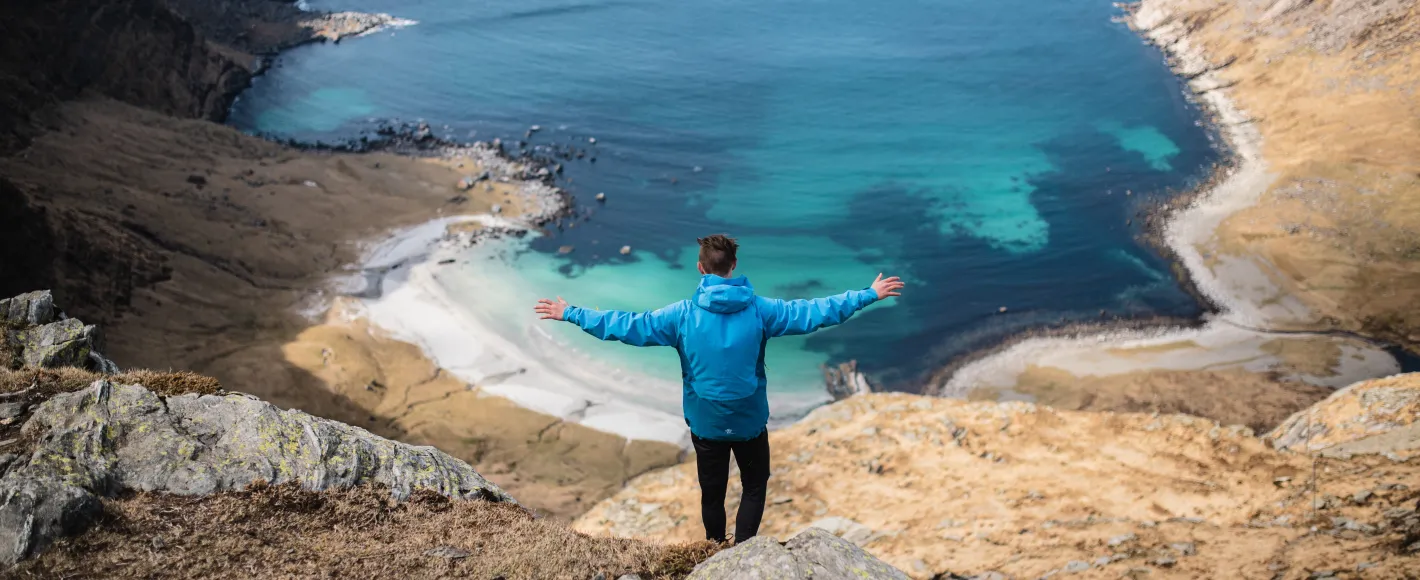Tourism with a clean conscience
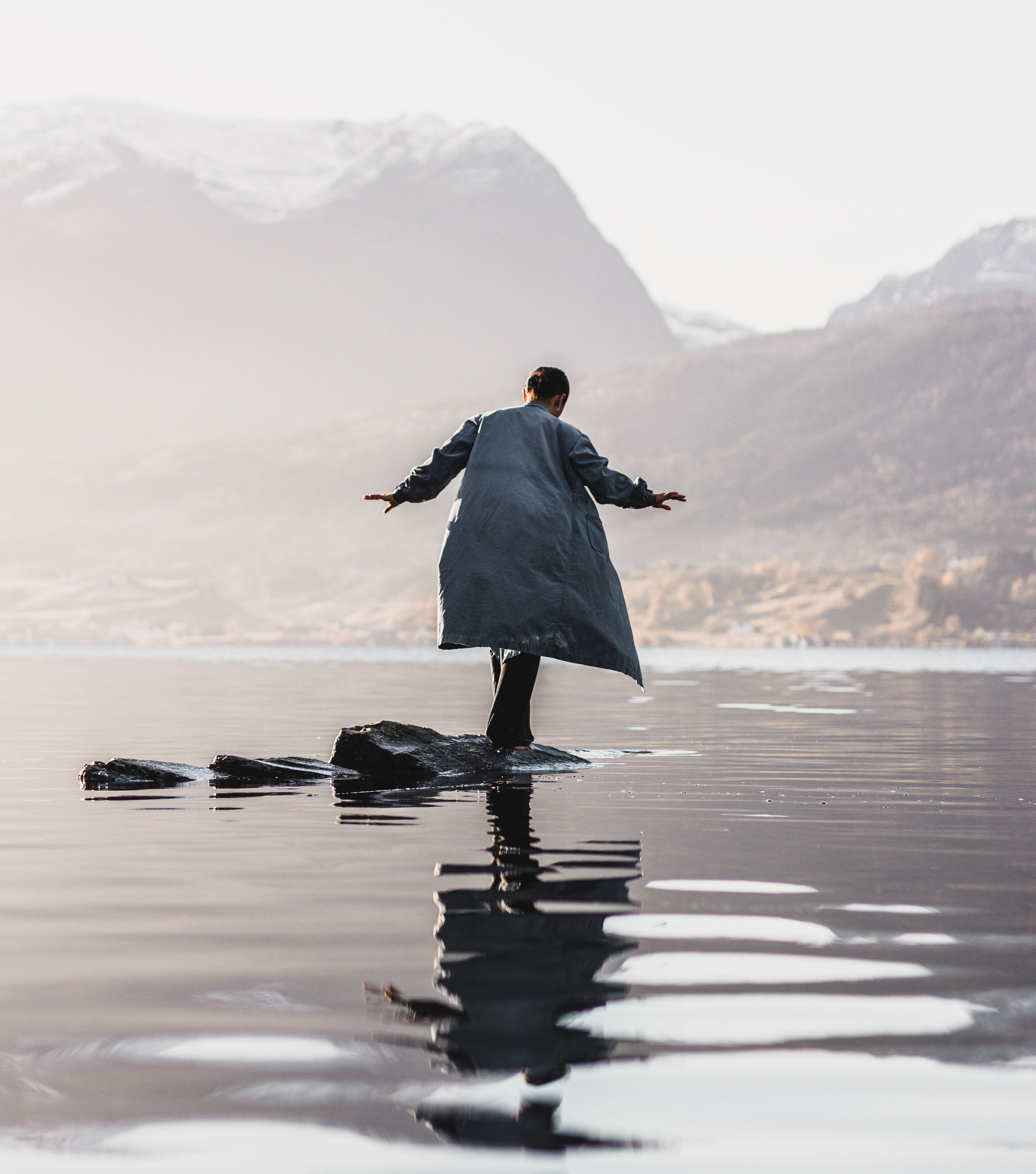
A tourist is by definition someone who travels and stays in an area purely for their own pleasure. It is a major privilege for people to be able to enjoy themselves in this way, but it also unfortunately puts unnecessary strain on our beautiful nature. You can help to reduce your climate footprint and nonetheless enjoy your stay by employing a few simple rules.
Green travel in Nordfjord in 12 steps
- Pick up rubbish: Make picking up any rubbish you find in nature a habit, and bring a plastic bag in your rucksack for this purpose. Children think it’s fun to pick up rubbish, and it raises adults’ awareness of their responsibility as role models. It will also help to prevent the next generation from throwing away rubbish without giving it a thought.
- Use a drinking flask: Millions of bottles of drinking water are sold in Norway, despite the fact that clean drinking water is available on tap and in rivers. Thousands of lorries transport the water on Norwegian roads, which leads to huge CO2 emissions. You can help to reduce your footprint by investing in a good drinking flask and filling it up when you need to. This will also benefit your wallet! Foto: © Rebecca Boyesen
- Going to the toilet in nature: You can go to the toilet in nature but make sure you do so some distance from the path and that you cover your excrement with rocks so that neither animals nor people step on it. It takes a long time for toilet paper to break down in nature, and is an unpleasant thing to come across, so take it with you in a dog poop bag.
- Do not harm the trees and fauna in forests: Use straps for hammocks that don’t gnaw holes in the bark, and don’t break branches or pick flowers that are protected. Show due consideration for the animals and birds in the area, remember that you are visiting their home.
- Support local providers: Enterprises that make a living from tourism put their heart into ensuring that you experience and enjoy nature in the best possible manner. Many of these companies pay towards initiatives for the common good, such as tidying beaches, operating sanitary facilities, emptying rubbish bins etc. Bear this in mind and buy local when you’re on holiday.
- Follow the path: The vegetation is vulnerable, and paths are getting wider and wider in many places because many people walk outside paths. Stay on the path even if it’s muddy. Foto: © Viktorija Gedrimiene
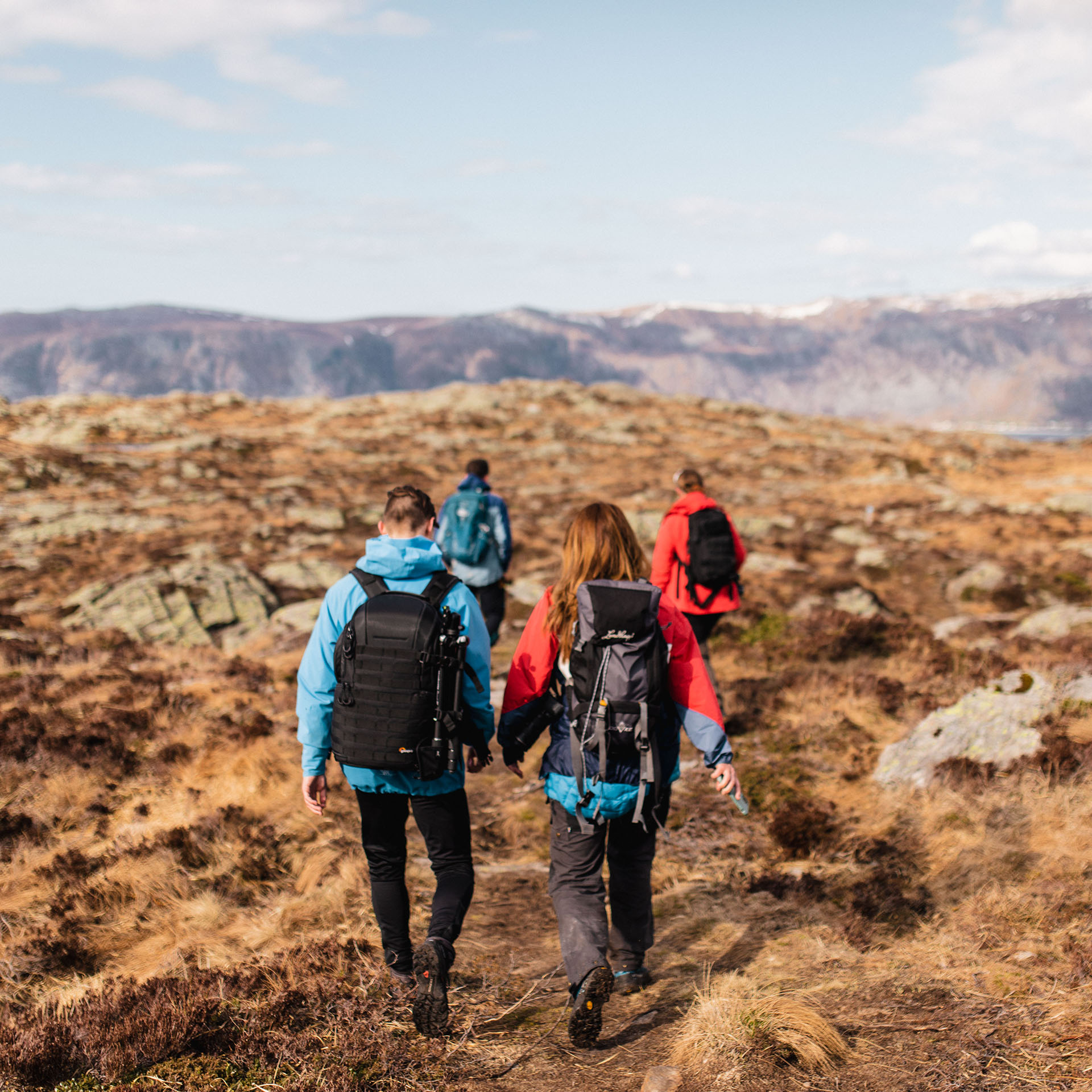
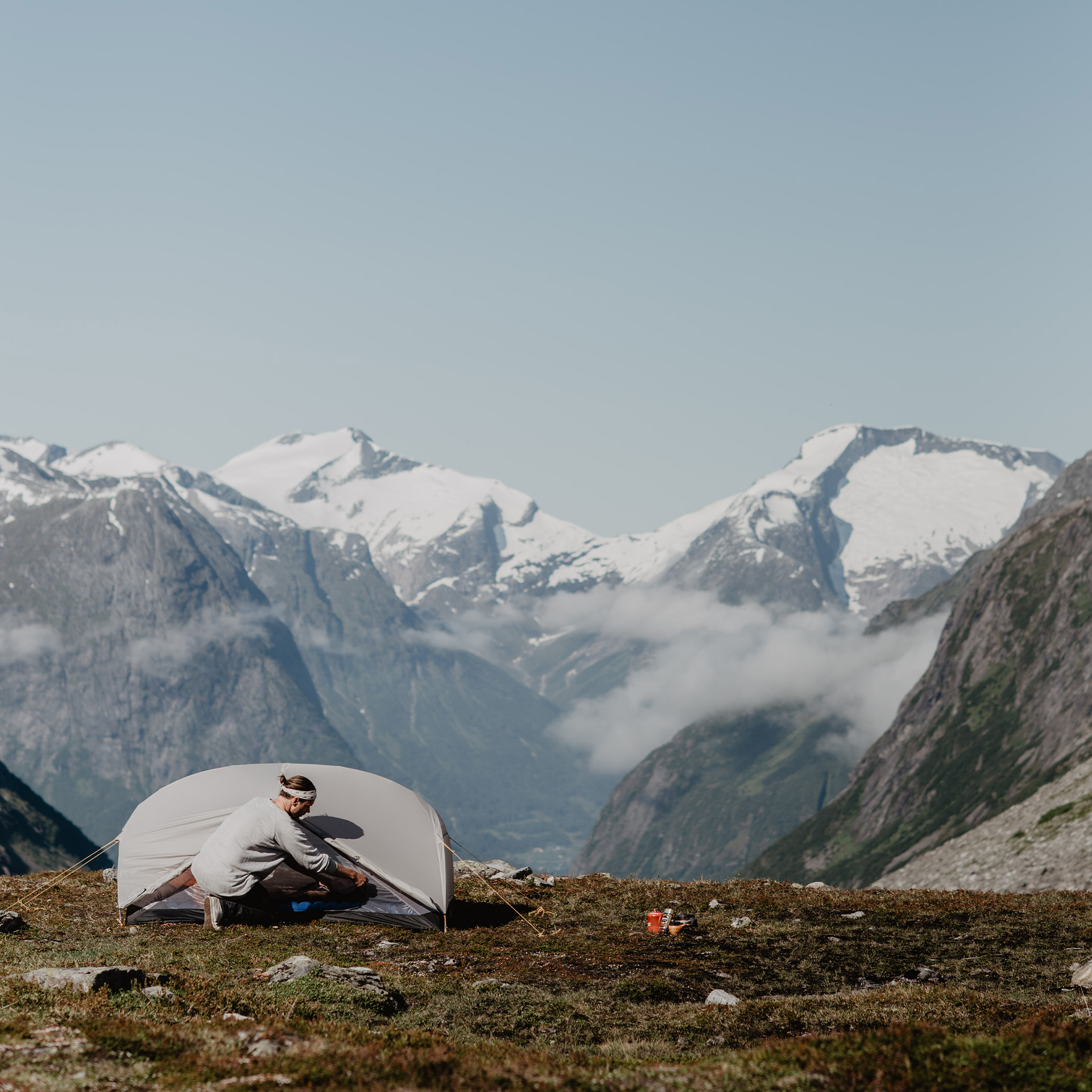
- Move your tent after two days: The public right of way allows you to put up a tent in uncultivated land, but you should move your tent after two days to ensure you leave as little trace as possible.
- Make a donation: In some places that see a lot of people, efforts have to be made to provide better facilities by e.g. building a public toilet or improving paths with planks of wood and rocks. Norwegians are encouraged to use a mobile payment app to donate a small sum to their upkeep. All the money goes towards keeping nature tidy, healthy and beautiful. Many people tip the staff in restaurants when they're happy with the service, so it's natural to support the upkeep of nature.
- Lighting a fire: Bring your own firewood, avoid disposable barbecues as far as possible and use established bonfire sites. A bonfire is a great place for people to gather around, eat and reflect. Invite other people to use your bonfire, it’s sociable, nice and makes for a smaller footprint than many small bonfires. Remember that lighting a bonfire, barbecue or disposable barbeque in or close to forests and all other uncultivated land is prohibited in Norway from 15 April to 15 September. Foto: © Thomas Sagvik
- Drive with others, take public transport or hire a bike. Park your car and travel like the locals: by bus and by bike. Travelling by bus and bike is relaxing, you don’t have to find a space to park, and you get to meet people who can give you great tips, which you don’t get sitting in your own car. If this isn’t possible: drive with others and park considerately
- Buy second-hand, mend, buy quality: It is a paradox that the outdoor sport industry is one of the worst industries when it comes to pollution and CO2 emissions. Invest in quality equipment that you’ll have for years to come rather than cheap brands that don’t last as long. Look after your equipment and mend it if possible. Recycle what you can no longer use. All municipalities in Norway have recycling sites, where you can dispose of ALL textiles, even tattered shoes and clothes that are no longer fit to be worn.
-
Encourage other people to do the same: Inspire other people to make good choices by drawing attention to the effort you make, or share smart tips for walks. Being environmentally conscious is in fashion, so use social media to spread the word and help to make taking care of nature a natural choice for everyone.
Foto: © Thomas Sagvik
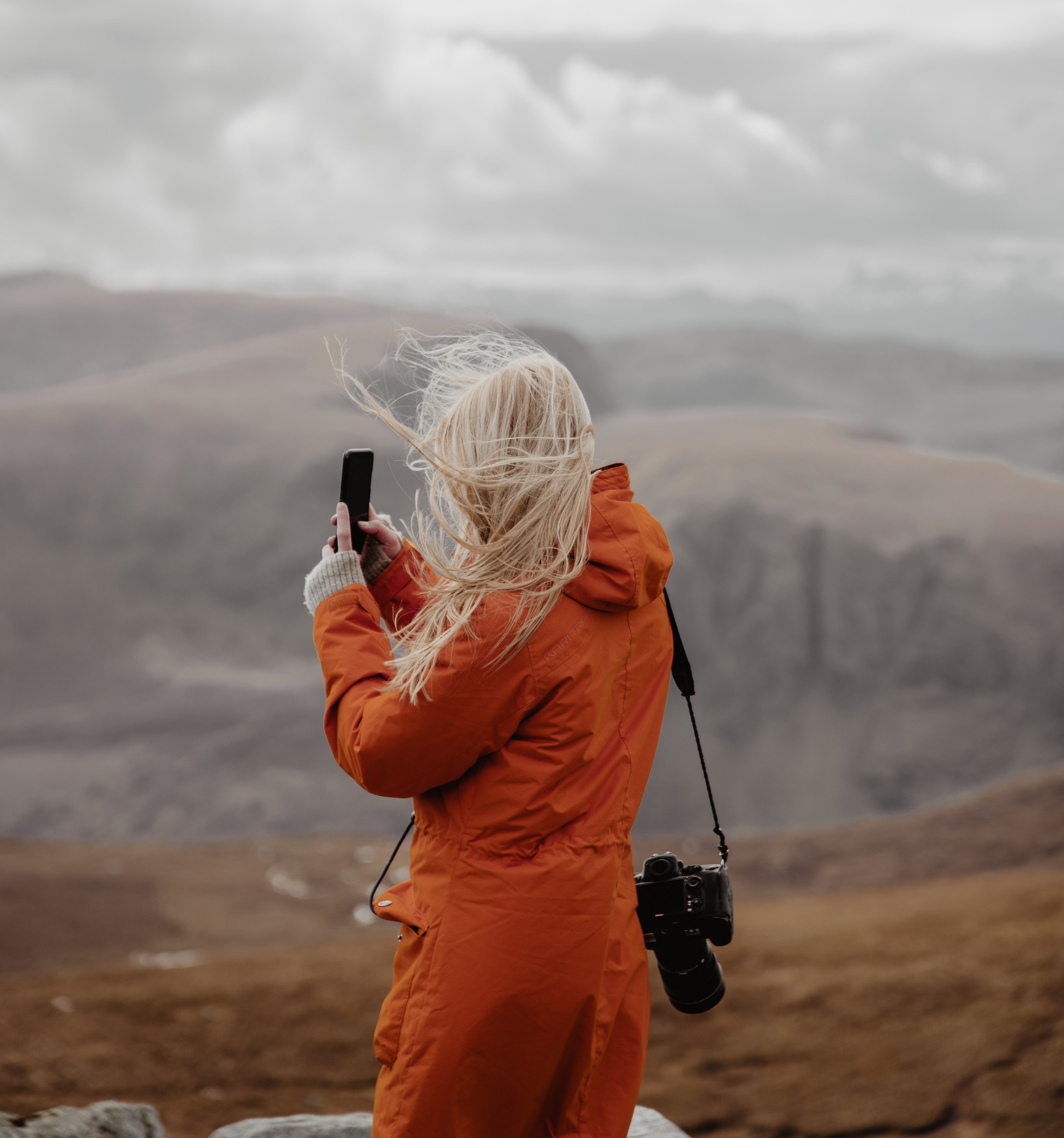
Thank you for taking care of Nordfjord's natural environment


